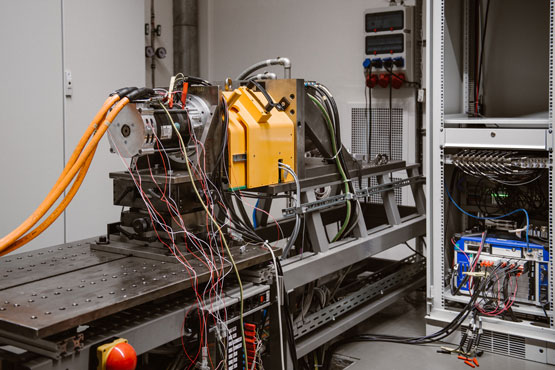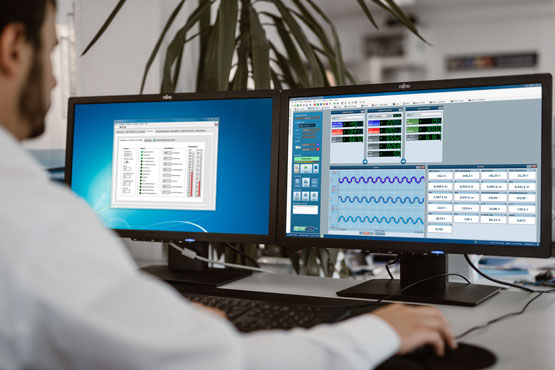A modern test bench concept for innovative electric motors
As a driver of innovation in the industry, Schabmüller now also offers its customers permanent magnet synchronous electric motors. This new type of drive, without any changes to the cooling concept, produces just as much power as comparable asynchronous motors while requiring considerably less space. Optimizing or revising the cooling concept enables this effect to be disproportionately increased. To achieve this, synchronous motors must meet high requirements, be powerful and energy-efficient, and have a high energy conversion efficiency to optimally use the supplied energy. To ensure precise tests for the new electric drives, Schabmüller worked with HBM experts to optimize the test bench’s entire measurement chain.
"We chose the combination of Genesis HighSpeed and Perception software, as well as the LabVIEW development environment because Perception and LabVIEW are very easy to connect with an interface,"
according to Stefan Lauck, development engineer at Schabmüller. "Thanks to the Perception sensor database, we can also integrate a wide range of different sensors for current, voltage and torque into the measuring system quite easily, simply by plug-and-play, like inserting a USB device in a computer. Integrating vibration sensors as part of electrical measurement equipment is possible without any problems. That saves us time and resources in setting up the test bench."
The Schabmüller test bench is used for various measurement tasks to reliably determine the short-term or continuous power and energy conversion efficiency of synchronous machines, or to identify their service life and component reliability. Schabmüller experts measure rotational speed and torque, generate efficiency maps, and, based on this measured data, determine longitudinal and transverse inductances. Additionally, Schabmüller implements service life experiments under maximum mechanical stress. Long-term thermal experiments also determine how various long-term and interval loading patterns affect the motor function. "The electric motors have to achieve a service life of at least 50,000 hours," explains Stefan Lauck.


